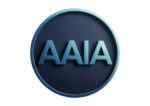Arab Lunar Discovery Autonomous Robot (ALDAR)
Arab Lunar Discovery Autonomous Robot (ALDAR):A mainly Arabic speaking robot, and other languages, that will be placed on the moon, that becomes its home for scientific discoveries. It will be used to communicate with Arabic speaking students, scientists and researchers, in real time. (Aldar is Arabic for the home, because we aim to make the moon our home, one day)
ALDAR – A Lunar AI Robot for Global Scientific Discovery
The future of lunar exploration is becoming multilingual! Imagine a robot scientist stationed on the Moon, capable of communicating with researchers and students worldwide, including Arabic-speaking communities, in real-time. This is the potential of ALDAR, a next-generation lunar robot designed for scientific discovery and global scientific collaboration.
Revolutionizing Lunar Science Communication:
- Multilingual Communication: ALDAR would be equipped with advanced AI for natural language processing, allowing it to communicate fluently in Arabic and other major languages. This would break down language barriers and empower Arabic-speaking scientists and students to directly participate in lunar research discussions and ask questions in real time.
- Real-time Science Engagement: Imagine Arabic-speaking students in classrooms around the world virtually interacting with ALDAR, receiving live updates on lunar discoveries and experiments. This could spark scientific curiosity and inspire the next generation of Arab scientists and engineers.
Technical Capabilities of ALDAR:
- Enhanced Robotics: ALDAR would be a highly mobile robot equipped with advanced sensors and instruments for conducting lunar experiments. It could be remotely controlled by scientists in the Middle East, allowing for real-time data collection and analysis.
- AI-powered Data Processing: ALDAR’s AI would be capable of processing vast amounts of lunar data, identifying patterns, and even generating preliminary scientific hypotheses. This could significantly accelerate scientific discovery on the Moon.
Potential Partners and Inspiration:
- The Mohammed Bin Rashid Space Centre (MBRSC), UAE: The UAE has a thriving space program with ambitious goals for lunar exploration. Collaboration with MBRSC could provide ALDAR with a launch platform and access to cutting-edge space technology.
- The Emirates Mars Mission (EMM): The successful deployment of rovers like “Hope” on Mars demonstrates the Arab world’s growing expertise in space exploration. ALDAR could build upon this success and push the boundaries of lunar science.
Challenges and Considerations:
- Harsh Lunar Environment: The Moon’s extreme temperatures, radiation, and lack of atmosphere pose significant challenges for any robotic system. ALDAR would need to be specially designed to withstand these harsh conditions.
- Communication Delays: Due to the vast distance between Earth and the Moon (about 238,855 miles or 384,400 kilometers), there will be a slight delay in communication (almost 1.28 seconds). However, advancements in satellite technology are constantly reducing these delays.
Conclusion:
ALDAR represents an exciting future for lunar exploration, fostering international scientific collaboration and breaking down language barriers. By empowering scientists and students worldwide, including Arabic-speaking communities, to participate in lunar research, ALDAR could usher in a new era of scientific discovery on the Moon.
